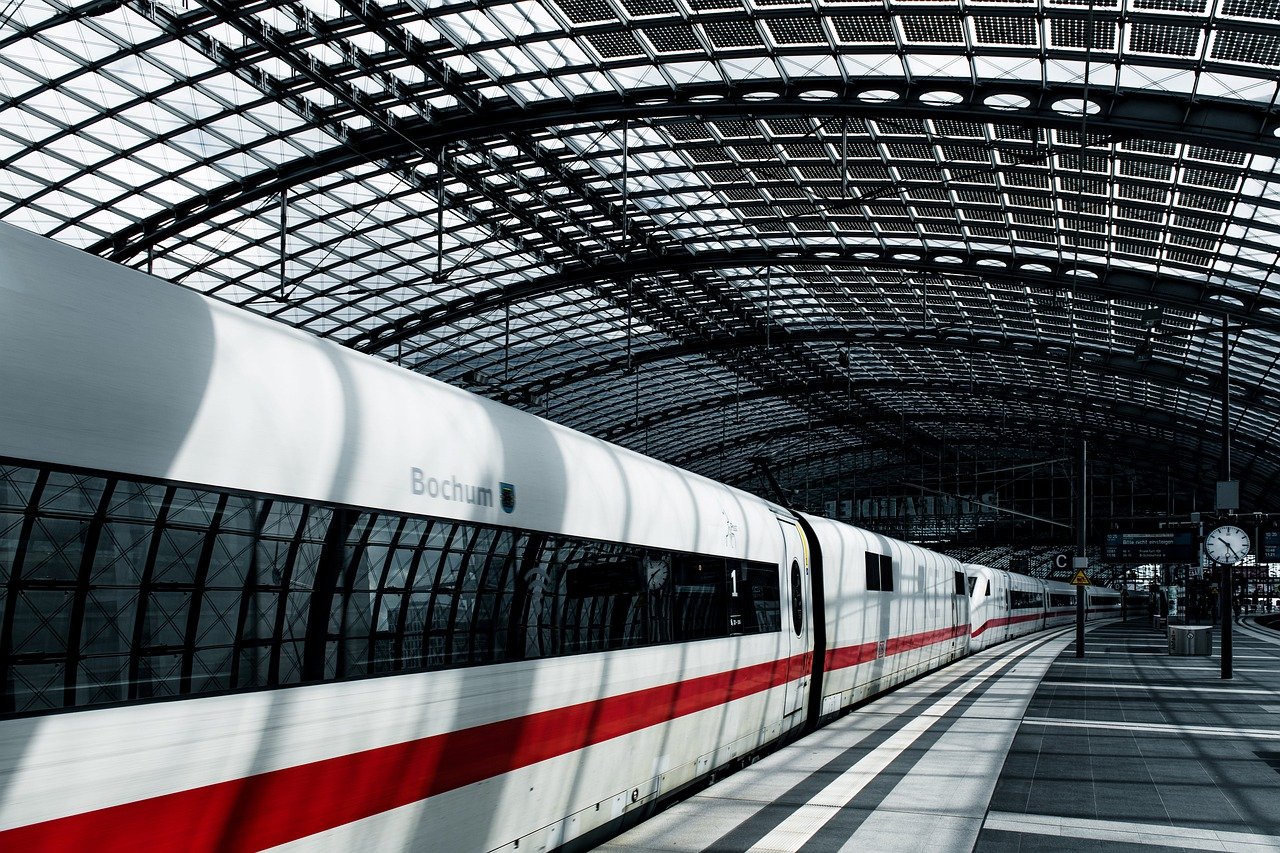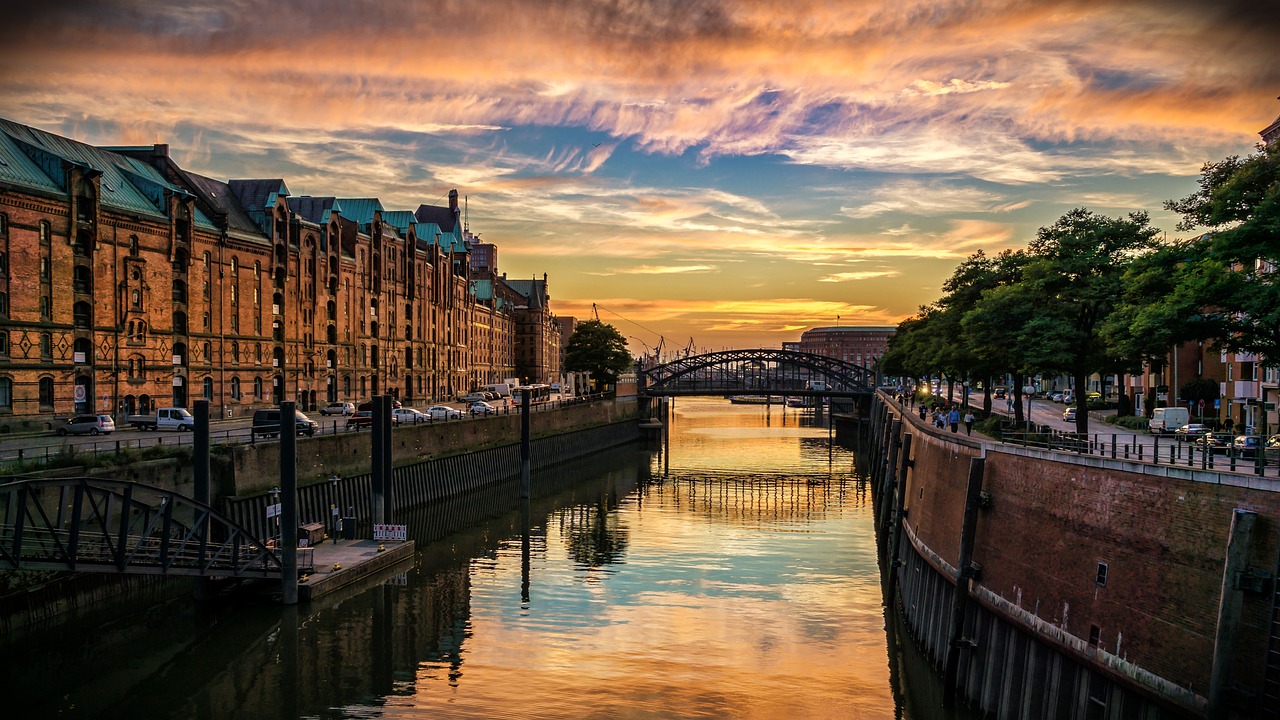Is It Possible to Live Sustainably in a City?
Imagine waking up in a bustling city, the sounds of traffic mingling with the chirping of birds, and the smell of fresh coffee wafting through the air. Now, picture this city not just as a concrete jungle but as a thriving ecosystem where sustainability is the norm rather than the exception. Is it really possible to live sustainably in a city? The answer is a resounding yes! With the right strategies and community involvement, urban sustainability can transform our cities into cleaner, greener, and more vibrant places to live.
Urban sustainability is a multifaceted concept that encourages cities to operate in ways that are environmentally friendly, economically viable, and socially just. It’s about creating a balance where the needs of the present are met without compromising the ability of future generations to meet their own needs. As the world continues to urbanize at an unprecedented rate, the importance of sustainable living in cities has never been more critical. But how do we achieve this balance?
Living sustainably in an urban environment involves a combination of individual actions and collective efforts. It requires a shift in mindset from convenience to consciousness. For example, choosing to walk or bike instead of driving not only reduces carbon emissions but also promotes physical health. Furthermore, supporting local businesses and participating in community gardens can foster a sense of belonging and enhance the local economy. In essence, sustainability is not just about the environment; it’s about enhancing our quality of life.
However, embracing sustainability in cities is not without its challenges. Issues such as outdated infrastructure, social inequality, and limited access to resources can hinder progress. Yet, these challenges are not insurmountable. By leveraging technology, fostering community engagement, and implementing innovative solutions, urban areas can pave the way for a sustainable future.
So, is it possible to live sustainably in a city? Absolutely! With a collective effort and a commitment to change, we can transform urban living into a model of sustainability that benefits everyone. The journey may be complex, but the rewards—cleaner air, healthier communities, and a thriving planet—are well worth the effort.
- What are some simple ways to live sustainably in a city?
Simple actions include using public transportation, reducing water usage, recycling, and supporting local farmers' markets.
- How can cities promote sustainable living?
Cities can promote sustainability by investing in green infrastructure, creating more bike lanes, and implementing community programs that encourage eco-friendly practices.
- What role does technology play in urban sustainability?
Technology can enhance sustainability through smart city solutions that optimize energy use, improve waste management, and increase public engagement in sustainability initiatives.

Understanding Urban Sustainability
Urban sustainability is more than just a buzzword; it's a vital concept that addresses how cities can thrive without depleting the resources necessary for future generations. Imagine a bustling city where the air is clean, green spaces are abundant, and communities are engaged in their environment. This vision is not far-fetched; it can be a reality if we embrace the principles of urban sustainability. At its core, urban sustainability revolves around three main pillars: environmental health, economic viability, and social equity. These pillars work together to create a balanced ecosystem that supports both the current population and future generations.
As cities continue to grow, understanding urban sustainability becomes increasingly important. The rapid urbanization we see today poses significant challenges, but it also presents unique opportunities for innovation. For instance, cities can implement sustainable practices that not only reduce their carbon footprint but also enhance the quality of life for their residents. This dual focus on environmental stewardship and human well-being is essential for creating urban environments that are both livable and resilient.
One of the key aspects of urban sustainability is the integration of green technologies and practices into city planning. This can include everything from renewable energy sources like solar and wind power to green roofs and urban farming. By prioritizing these sustainable practices, cities can significantly reduce their environmental impact while also fostering a sense of community and belonging among residents.
Moreover, urban sustainability encourages a shift in mindset. It challenges us to think about our consumption patterns and how they affect our surroundings. For example, consider the waste generated by a typical household. By adopting sustainable practices such as recycling and composting, we can drastically reduce landfill contributions. This not only benefits the environment but also promotes a culture of sustainability within the community.
Ultimately, understanding urban sustainability is about recognizing our interconnectedness with the environment. It requires collaboration among government entities, businesses, and citizens to create a sustainable urban future. By working together, we can build cities that not only meet the needs of today but also pave the way for a brighter, more sustainable tomorrow.
In summary, urban sustainability is a multifaceted approach that encompasses environmental, economic, and social dimensions. It requires a collective effort to transform our cities into places that are not only functional but also thriving ecosystems. As we delve deeper into the benefits and challenges of sustainable living in urban areas, it's essential to keep this holistic perspective in mind.

Benefits of Sustainable Living
Living sustainably in a city is not just a trend; it’s a lifestyle choice that brings a plethora of benefits to individuals and communities alike. Imagine a world where your daily choices contribute to a healthier planet, and you save money while improving your quality of life. Sounds enticing, right? This is the essence of urban sustainability—an approach that intertwines environmental responsibility with the well-being of city dwellers.
One of the most compelling advantages of sustainable living is the improvement in health outcomes. Urban areas often struggle with pollution and limited access to nature, which can lead to various health issues. By adopting sustainable practices, such as reducing car dependency and increasing green spaces, residents can experience a significant reduction in air pollution. This, in turn, leads to fewer respiratory problems and a general boost in public health. Studies have shown that cities with more parks and recreational areas have lower rates of obesity and mental health issues, making the case for greener urban environments even stronger.
Moreover, sustainable living can also reduce living costs. Think about it—by utilizing energy-efficient appliances, reducing waste, and embracing public transportation, you can save a substantial amount on utility bills and commuting costs. For instance, households that switch to solar energy can significantly cut down on electricity expenses. Additionally, many cities offer incentives for residents who engage in sustainable practices, such as tax breaks or rebates for energy-efficient home upgrades. This not only benefits your wallet but also contributes to a more resilient local economy.
Another vital aspect of sustainable living is the enhancement of community engagement. When residents come together to promote sustainability, they build stronger connections and foster a sense of belonging. Community gardens, local clean-up events, and sustainability workshops are just a few examples of how urban dwellers can collaborate for a common goal. Such initiatives not only beautify neighborhoods but also encourage social interaction and support networks among residents. When people feel connected to their community, they are more likely to participate in local governance and advocate for sustainable policies.
So, what does this all mean for you? Well, embracing a sustainable lifestyle in the city can lead to a healthier, more cost-effective, and socially enriched life. It’s like planting a seed; with care and attention, it can grow into something beautiful that benefits not just you, but everyone around you. As we continue to face environmental challenges, the question isn’t whether we can live sustainably in a city, but rather, how quickly can we make it a reality?
- What are some easy ways to start living sustainably in the city?
Start small! Consider using public transport, reducing plastic usage, and supporting local businesses. Every little action counts.
- How can I get involved in my community's sustainability efforts?
Look for local organizations or community groups focused on sustainability. Participating in workshops or volunteering for clean-up events is a great way to start.
- Are there financial benefits to living sustainably?
Absolutely! Sustainable practices can lead to lower utility bills, potential tax incentives, and increased property values in eco-friendly neighborhoods.

Health and Well-being
When we talk about sustainable living in cities, one of the most exciting aspects is its profound impact on . Imagine a bustling metropolis where the air is clean, parks are plentiful, and communities thrive together. It's not just a dream; it's a vision that can be realized through sustainable practices. Urban sustainability promotes healthier lifestyles by reducing pollution and enhancing access to green spaces, which are crucial for our physical and mental health.
Consider this: cities are often hotspots for pollution, with vehicles, factories, and construction sites contributing to poor air quality. However, by adopting sustainable practices such as increasing green spaces, promoting public transport, and encouraging cycling and walking, we can significantly lower the levels of harmful pollutants. This leads to a healthier population, as cleaner air reduces the risk of respiratory diseases and other health issues.
Moreover, the connection between green spaces and well-being is undeniable. Parks, gardens, and recreational areas not only provide a place for physical activity, but they also offer a retreat from the urban hustle and bustle. Studies have shown that spending time in nature can reduce stress, enhance mood, and even improve cognitive function. Here are some benefits of access to green spaces:
- Stress Reduction: Natural environments have a calming effect, helping to lower stress levels.
- Physical Activity: Parks encourage walking, jogging, and other forms of exercise, which are vital for maintaining a healthy lifestyle.
- Social Interaction: Green spaces serve as community hubs where people can gather, fostering social connections and a sense of belonging.
In addition to green spaces, sustainable urban living also focuses on improving air quality through various initiatives. For instance, cities can implement stricter regulations on emissions, promote the use of electric vehicles, and invest in renewable energy sources. The result? A significant decrease in air pollution levels, leading to better health outcomes for residents. Cleaner air not only reduces the incidence of asthma and other respiratory ailments, but it also contributes to overall vitality and longevity.
To illustrate the impact of sustainable practices on health, consider the following table that compares health outcomes in cities with high versus low levels of sustainability:
| City Type | Average Air Quality Index (AQI) | Rate of Respiratory Diseases (per 1000) | Access to Green Spaces (%) |
|---|---|---|---|
| High Sustainability | 30 | 5 | 80% |
| Low Sustainability | 75 | 15 | 20% |
This table clearly shows that cities prioritizing sustainability not only enjoy cleaner air but also healthier populations. The evidence is compelling: by fostering an environment that supports sustainable living, urban areas can significantly enhance the health and well-being of their residents.
In conclusion, the journey towards sustainable living in cities is not just about environmental conservation; it’s about creating a healthier, happier, and more connected community. When urban spaces are designed with sustainability in mind, we unlock a treasure trove of benefits that ripple through every aspect of life, promoting a vibrant and fulfilling existence for all city dwellers.
Q1: What are some simple ways to live sustainably in a city?
A1: You can start by using public transport, reducing waste, supporting local businesses, and participating in community gardening initiatives.
Q2: How do green spaces affect mental health?
A2: Green spaces provide a calming environment, reduce stress, and promote physical activity, all of which contribute to improved mental health.
Q3: What role does air quality play in urban sustainability?
A3: Good air quality is essential for public health. Sustainable practices help reduce pollution, leading to healthier living conditions for city residents.

Access to Green Spaces
In the hustle and bustle of urban life, where concrete and steel dominate the landscape, the presence of green spaces becomes a lifeline for city dwellers. These pockets of nature not only provide a much-needed escape from the chaos but also play a crucial role in enhancing our overall well-being. Imagine stepping into a park after a long day; the fresh air, the vibrant colors of flowers, and the soothing sounds of rustling leaves can transform your mood instantly. But why exactly are these green spaces so vital in urban settings?
First and foremost, access to parks and gardens fosters a sense of community. When people gather in these shared spaces, they engage in activities that promote social interaction and cohesion. Whether it's a weekend picnic, a yoga class, or simply a stroll with friends, these interactions can lead to stronger neighborhood ties. Moreover, they serve as venues for local events, markets, and festivals, enriching the cultural fabric of the city.
Furthermore, green spaces are essential for physical health. Studies have shown that living near parks can encourage more active lifestyles. People are more likely to walk, jog, or cycle when they have access to safe and inviting outdoor areas. This increased physical activity can lead to significant health benefits, including lower rates of obesity, heart disease, and mental health issues.
Additionally, the environmental benefits of green spaces cannot be overlooked. They play a vital role in improving air quality by absorbing pollutants and releasing oxygen. Trees and plants act as natural air filters, making our urban environments healthier. According to a study by the National Recreation and Park Association, urban areas with more greenery experience lower levels of air pollution, which can lead to better respiratory health for residents.
To illustrate the importance of green spaces, consider the following table that highlights some key benefits:
| Benefit | Description |
|---|---|
| Community Engagement | Encourages social interactions and strengthens neighborhood ties. |
| Physical Health | Promotes active lifestyles and reduces health issues. |
| Environmental Quality | Improves air quality and reduces urban heat. |
However, despite these numerous advantages, access to green spaces is not equally distributed across urban areas. Often, lower-income neighborhoods lack sufficient parks and recreational areas, exacerbating social inequalities. This disparity can lead to a cycle where those who need the benefits of nature the most are the ones who have the least access to it. Therefore, it is crucial for city planners and policymakers to prioritize the creation and maintenance of green spaces, ensuring they are accessible to all residents.
In conclusion, green spaces are not just a luxury; they are a necessity for sustainable urban living. They enhance our health, foster community, and improve our environment. So the next time you find yourself in a city, take a moment to appreciate the parks and gardens around you. They are more than just pretty places; they are vital components of a healthy, sustainable urban lifestyle.
- Why are green spaces important in cities? Green spaces improve air quality, promote physical health, and foster community engagement.
- How can I advocate for more green spaces in my community? You can join local advocacy groups, attend city council meetings, and participate in community planning initiatives.
- What are some examples of green spaces? Parks, community gardens, green roofs, and urban forests are all examples of green spaces.

Air Quality Improvement
Improving air quality is not just a luxury; it’s a necessity for urban dwellers. In cities where the hustle and bustle can often lead to increased pollution levels, sustainable living practices play a crucial role in fostering cleaner air. Think about it: when you step outside, do you want to breathe in fresh, clean air or a cloud of smog? The choice is clear, and the impact of our collective actions can be profound.
One of the most effective ways to enhance air quality in urban environments is through the promotion of green spaces. Parks, gardens, and urban forests act as natural air filters, absorbing carbon dioxide and releasing oxygen. They also provide a vital habitat for various species, contributing to urban biodiversity. Research indicates that cities with ample green spaces have significantly lower levels of air pollution compared to those that lack such areas.
Moreover, implementing sustainable transportation options can dramatically reduce air pollution. Encouraging the use of public transit, cycling, and walking can lower the number of vehicles on the road, which in turn decreases emissions. Cities like Amsterdam and Copenhagen have set stellar examples by prioritizing bike lanes and pedestrian-friendly infrastructure.
To further illustrate the impact of sustainable practices on air quality, consider the following table:
| Practice | Impact on Air Quality |
|---|---|
| Planting Trees | Reduces CO2 levels, increases oxygen production |
| Promoting Public Transport | Decreases vehicle emissions, reduces traffic congestion |
| Implementing Green Roofs | Filters pollutants, cools urban heat islands |
Additionally, urban areas can adopt stricter emissions regulations for industries and vehicles. By enforcing limits on pollutants, cities can significantly improve air quality. This not only benefits the environment but also enhances the health of residents, reducing the incidence of respiratory diseases and improving overall well-being.
In conclusion, improving air quality in cities is a multifaceted challenge that requires a blend of innovative solutions and community engagement. By embracing sustainable practices, we can create urban environments that not only thrive but also provide a healthier and more enjoyable living experience for everyone. After all, clean air is a fundamental human right, and it’s time we prioritize it in our urban planning and daily choices.
- What are the main sources of air pollution in cities? Common sources include vehicle emissions, industrial discharges, and construction activities.
- How can individuals contribute to improving air quality? Individuals can reduce their carbon footprint by using public transport, biking, walking, or carpooling whenever possible.
- What role do plants play in air quality improvement? Plants absorb carbon dioxide and other pollutants, releasing oxygen and improving overall air quality.
- Are there technologies that can help monitor air quality? Yes, various smart technologies and apps are available that help track air quality levels in real-time.

Economic Advantages
When we think about sustainable living in urban areas, it’s easy to focus on the environmental aspects. However, the of adopting sustainable practices in cities are equally compelling. For starters, sustainable living can lead to significant cost savings for individuals and communities alike. Imagine reducing your monthly energy bill by using solar panels or energy-efficient appliances. These small changes can accumulate into substantial savings over time, allowing residents to allocate their finances towards other important areas of life, like education or healthcare.
Moreover, sustainable practices can stimulate local economies. When cities invest in green infrastructure, such as bike lanes or public transport systems, they create job opportunities in construction, maintenance, and operation. According to a study by the EPA, for every $1 million invested in public transportation, approximately 36 jobs are created. This is a win-win situation: not only do we enhance our urban environments, but we also boost employment rates, making our cities more resilient.
Additionally, sustainable living can attract businesses that prioritize eco-friendly practices. Companies are increasingly looking to establish themselves in cities that support sustainability, as it aligns with their corporate social responsibility goals. This trend can lead to a vibrant job market and a diverse economy. For instance, cities like San Francisco and Portland have seen a surge in green tech startups, which not only contribute to local economies but also position these cities as leaders in innovation.
Now, let’s break down some of the key economic benefits of sustainable living:
- Job Creation: As mentioned, investing in sustainable infrastructure creates a plethora of job opportunities.
- Cost Savings: Individuals can save money through energy efficiency and reduced utility bills.
- Attracting Investment: Sustainable cities draw in businesses and investors looking for eco-friendly environments.
- Increased Property Values: Properties in sustainable neighborhoods often see an increase in value due to their desirable locations and amenities.
In summary, the economic advantages of sustainable living in urban areas are multifaceted. From job creation to cost savings, the benefits extend beyond individual households and contribute to the overall prosperity of the community. By embracing sustainable practices, cities can pave the way for a more resilient and economically viable future.
1. How does sustainable living impact job creation?
Sustainable living initiatives often lead to the development of green jobs in various sectors, including construction, energy, and public transportation. Investments in these areas create new employment opportunities, benefiting the local economy.
2. Can sustainable practices really save me money?
Absolutely! By implementing energy-efficient solutions and reducing waste, individuals can significantly lower their utility bills and save money over time.
3. Are sustainable cities more attractive to businesses?
Yes, many businesses prefer to operate in sustainable cities as it aligns with their values and can enhance their brand image, leading to increased investment in those areas.

Challenges to Urban Sustainability
While the idea of living sustainably in urban environments is appealing, it’s not without its challenges. Cities are often bustling hubs of activity, and this vibrancy can come at a cost. One of the most significant hurdles is the infrastructure limitations that many urban areas face. Outdated systems for transportation, waste management, and energy consumption can significantly impede the implementation of sustainable practices. Imagine trying to fit a square peg into a round hole; that’s how difficult it can be to introduce modern solutions into older, inefficient frameworks. For instance, a city might want to implement a new recycling program, but if the waste management system is outdated, it could lead to confusion and inefficiencies.
Another critical challenge stems from social inequality. In many urban settings, access to sustainable resources is not evenly distributed. Wealthier neighborhoods often have better access to green spaces, public transportation, and sustainable food sources, while lower-income areas may lack these essential services. This disparity raises the question: how can we expect everyone to live sustainably if the resources are not available to all? It’s like trying to run a race where some participants have running shoes while others are barefoot. Addressing these inequalities is vital for creating an inclusive approach to urban sustainability.
Moreover, the rapid pace of urbanization itself poses a challenge. As more people flock to cities in search of opportunities, the demand for housing and services increases, often leading to overcrowding. This can strain existing infrastructure and resources, making it even harder to implement sustainable practices. For example, a sudden influx of residents may lead to a spike in traffic congestion, which can worsen air quality and contribute to greenhouse gas emissions. Without careful planning and investment, urban areas can quickly become unsustainable.
To tackle these challenges, cities must embrace innovative solutions and foster collaboration among stakeholders. Here are some potential strategies:
- Modernizing Infrastructure: Investing in smart technologies can help update outdated systems and improve efficiency.
- Community Engagement: Involving local communities in sustainability initiatives can ensure that everyone has a voice and access to resources.
- Policy Changes: Implementing policies that promote equity and accessibility can help bridge the gap in resource distribution.
Overall, while the road to urban sustainability is fraught with challenges, it’s not an impossible journey. By recognizing these obstacles and working collaboratively to address them, cities can pave the way for a more sustainable future.
1. What are the main challenges to urban sustainability?
The main challenges include outdated infrastructure, social inequality, and the rapid pace of urbanization. Each of these factors can hinder the implementation of sustainable practices in cities.
2. How can cities overcome infrastructure limitations?
Cities can overcome these limitations by investing in modern technologies and systems that enhance efficiency and resource management, ensuring that they can support sustainable initiatives effectively.
3. What role does social inequality play in urban sustainability?
Social inequality affects access to sustainable resources, meaning that not all communities have the same opportunities to engage in sustainable practices. Addressing these disparities is crucial for promoting inclusive urban sustainability.
4. Can community engagement help in achieving urban sustainability?
Absolutely! Engaging communities in sustainability efforts fosters collaboration and commitment, ensuring that initiatives are tailored to meet the needs of all residents.

Infrastructure Limitations
When we talk about urban sustainability, one of the biggest hurdles we face is . Cities around the world were often designed and built in a time when sustainability wasn’t even on the radar. Think about it: many urban areas still rely on outdated systems for transportation, waste management, and energy distribution. These systems can be inefficient, costly, and detrimental to the environment. The challenge lies in modernizing these infrastructures to align with today’s sustainability goals.
For instance, consider public transportation. In cities where the transit system is underdeveloped or poorly maintained, residents are more likely to rely on personal vehicles. This not only increases traffic congestion but also contributes to higher levels of air pollution. In contrast, cities that invest in efficient public transport options can significantly reduce their carbon footprint. However, upgrading these systems requires substantial funding and long-term planning, which can be daunting for city planners and governments alike.
Furthermore, we have to look at energy infrastructure. Many urban areas still depend on fossil fuels for their energy needs. Transitioning to renewable energy sources like solar or wind power is essential for sustainability, but it requires an overhaul of existing energy systems. This transition isn’t just about installing new technology; it also involves retraining workers, changing regulations, and often, overcoming public resistance to change.
In addition, the physical layout of cities can also pose significant challenges. Urban sprawl, where cities expand outwards rather than upwards, leads to increased reliance on automobiles and creates a patchwork of neighborhoods that are disconnected from one another. This can make it difficult for residents to access essential services and amenities without a car, further entrenching the cycle of unsustainable living.
To summarize, the limitations of infrastructure in urban areas can significantly hinder efforts toward sustainability. The good news is that these challenges are not insurmountable. With innovative thinking and a commitment to long-term planning, cities can begin to modernize their infrastructures. Here’s a quick overview:
| Infrastructure Challenge | Impact on Sustainability | Potential Solutions |
|---|---|---|
| Outdated Public Transport | Increases traffic congestion and pollution | Investing in efficient transit systems |
| Reliance on Fossil Fuels | Contributes to greenhouse gas emissions | Transitioning to renewable energy sources |
| Urban Sprawl | Encourages car dependency | Promoting mixed-use developments |
Ultimately, addressing these infrastructure limitations is crucial for paving the way toward a more sustainable urban future. It’s not just about making changes; it’s about creating a holistic approach that considers the interconnectedness of various systems within the city. By investing in modern infrastructure, we can enhance the quality of life for residents while also protecting our planet for future generations.
- What are the main challenges to urban sustainability?
Challenges include outdated infrastructure, social inequality, and reliance on fossil fuels.
- How can cities improve their public transportation systems?
Cities can invest in modern transit options, improve maintenance, and promote public awareness of their benefits.
- What role does community engagement play in urban sustainability?
Community engagement fosters collaboration and encourages residents to take part in sustainability initiatives.

Social Inequality
Social inequality is a significant barrier to achieving urban sustainability. In many cities, the disparity in wealth and access to resources creates a division that can hinder collective efforts towards sustainable living. Imagine a city where some neighborhoods are lush with parks, community gardens, and clean energy, while others struggle with pollution, lack of green spaces, and inadequate public services. This stark contrast not only affects the quality of life for residents but also undermines the overall sustainability goals of the city.
Access to sustainable resources such as clean water, public transportation, and affordable housing is often skewed in favor of wealthier populations. For instance, low-income communities may lack the infrastructure to support sustainable practices, such as recycling programs or energy-efficient housing. This creates a vicious cycle where those who are already disadvantaged face even greater challenges in adopting sustainable lifestyles. The challenge lies in bridging this gap and ensuring that all residents, regardless of their socio-economic status, have the opportunity to participate in and benefit from sustainability initiatives.
To address these inequalities, cities can implement targeted programs aimed at uplifting underprivileged communities. Here are some strategies that can be adopted:
- Affordable Housing Initiatives: Developing energy-efficient housing that is accessible to low-income families can reduce living costs and promote sustainable living.
- Community Education Programs: Educating residents about sustainable practices and how to access resources can empower communities to take charge of their environmental impact.
- Equitable Resource Distribution: Ensuring that public services, such as public transportation and green spaces, are evenly distributed can help level the playing field.
Furthermore, local governments and organizations can collaborate with community leaders to create policies that address social inequality directly. By involving residents in the decision-making process, cities can foster a sense of ownership and commitment to sustainability efforts. It's essential to recognize that sustainability is not just an environmental issue but a social one as well. When everyone has a stake in the outcome, cities can work towards a more inclusive and sustainable future.
- What is social inequality? Social inequality refers to the unequal distribution of resources, opportunities, and privileges within a society, often based on factors such as income, race, and education.
- How does social inequality affect sustainability? Social inequality limits access to sustainable resources and initiatives, making it difficult for disadvantaged communities to adopt sustainable practices.
- What can be done to reduce social inequality in urban areas? Implementing affordable housing, community education programs, and equitable resource distribution can help bridge the gap in social inequality.

Innovative Solutions for Sustainable Cities
As urban areas continue to grow and evolve, the quest for sustainability becomes more pressing. Cities around the globe are stepping up to the plate, adopting innovative solutions that not only address environmental concerns but also enhance the quality of life for their residents. From smart technologies to community engagement initiatives, the landscape of urban sustainability is transforming rapidly. But what exactly does this transformation look like?
One of the most exciting developments in this field is the rise of smart city technologies. These tools harness the power of data and connectivity to improve city management and resource efficiency. Imagine a city where traffic lights adjust in real-time to reduce congestion, or where waste collection routes are optimized based on the actual fill levels of bins. This isn't science fiction; it's happening now in cities like Barcelona and Singapore. By integrating sensors and IoT (Internet of Things) devices, urban planners can create environments that are not only more efficient but also more responsive to the needs of their citizens.
For instance, consider how smart grids and renewable energy sources are being implemented in urban settings. These technologies allow cities to manage energy consumption more effectively, reducing waste and lowering carbon footprints. In addition, many cities are investing in solar panels and wind turbines to harness renewable energy, creating a cleaner and more sustainable energy landscape. The table below illustrates some of the key technologies being adopted:
| Technology | Description | Benefits |
|---|---|---|
| Smart Grids | Electricity supply networks that use digital communications technology. | Improved energy efficiency and reliability. |
| Renewable Energy Sources | Energy derived from natural processes that are replenished constantly. | Reduced greenhouse gas emissions and reliance on fossil fuels. |
| IoT Devices | Devices connected to the internet that collect and exchange data. | Enhanced monitoring and management of city resources. |
But technology alone won't solve the challenges of urban sustainability. Community engagement is equally vital. Cities that foster collaboration between residents, local businesses, and governmental bodies often see the most success in implementing sustainable practices. Initiatives such as community gardens, local recycling programs, and educational workshops empower citizens to take an active role in sustainability efforts. When people feel connected to their environment, they are more likely to contribute positively.
Take, for example, the concept of community-led initiatives. These programs encourage residents to come together to address local sustainability challenges, whether it's organizing clean-up days in parks or creating urban farms. Not only do these initiatives help improve the local environment, but they also strengthen community bonds. When individuals work towards a common goal, it fosters a sense of belonging and responsibility that can lead to long-lasting change.
In conclusion, the path to sustainable cities is paved with innovation and collaboration. By leveraging smart technologies and engaging communities, urban areas can tackle the pressing environmental issues of our time. It's not just about making cities livable today; it's about ensuring they are thriving ecosystems for generations to come. As we look to the future, the question remains: how will you contribute to the sustainability of your city?
- What are smart city technologies? Smart city technologies refer to the use of digital solutions and data analytics to enhance urban living and resource management.
- How can communities engage in sustainability? Communities can engage through local initiatives such as community gardens, recycling programs, and educational workshops.
- What are the benefits of sustainable living? Sustainable living can lead to improved health, reduced living costs, and enhanced community engagement.
- Why is urban sustainability important? Urban sustainability is crucial for ensuring that cities can meet the needs of current residents without compromising the ability of future generations to meet their own needs.

Smart City Technologies
In the rapidly evolving landscape of urban living, are leading the charge toward a more sustainable future. These innovations are not just about making cities 'smart'; they're about enhancing the quality of life for residents while minimizing environmental impact. Imagine a city where traffic flows smoothly, energy consumption is optimized, and public services are delivered efficiently. Sounds like a dream, right? Well, thanks to advancements in technology, this dream is becoming a reality.
At the heart of smart city initiatives are various technologies that collect and analyze data to improve city operations. For instance, IoT (Internet of Things) devices can monitor everything from traffic patterns to energy usage. This data-driven approach allows city planners to make informed decisions that lead to more effective resource management. Cities like Barcelona and Singapore are already implementing these systems, resulting in reduced congestion and lower emissions.
Moreover, smart city technologies extend beyond just traffic management. Consider the role of renewable energy sources integrated into urban infrastructure. Solar panels on rooftops, wind turbines in parks, and energy-efficient buildings are all part of the equation. These technologies not only reduce reliance on fossil fuels but also lower energy costs for residents. According to a recent study, cities that have adopted smart energy solutions have seen energy costs decrease by up to 30%.
Another exciting aspect of smart city technologies is their potential to enhance public safety. With the implementation of smart surveillance systems and emergency response technologies, cities can respond more quickly to incidents, ensuring the safety of their citizens. For example, in New York City, the integration of AI-driven analytics in surveillance footage has led to a significant reduction in crime rates, showcasing how technology can create safer urban environments.
To illustrate the impact of smart city technologies, let’s take a look at a simple comparison of traditional city management versus smart city management:
| Traditional City Management | Smart City Management |
|---|---|
| Reactive approach to traffic congestion | Proactive traffic management using real-time data |
| High energy consumption | Optimized energy use with smart grids |
| Manual waste collection | Smart waste management systems that optimize collection routes |
| Limited community engagement | Interactive platforms for citizen feedback and involvement |
As cities continue to grow, the integration of smart technologies is not just beneficial; it's essential. The potential for improved quality of life, increased efficiency, and reduced environmental impact is enormous. However, it’s crucial for city planners and stakeholders to prioritize inclusivity in these initiatives. Ensuring that all community members have access to these technologies is vital for fostering a truly sustainable urban environment.
In conclusion, smart city technologies represent a beacon of hope for urban sustainability. They offer innovative solutions that can transform how we live, work, and interact within our cities. As we embrace these advancements, the vision of a sustainable urban future becomes increasingly attainable.
- What are smart city technologies? Smart city technologies refer to the use of digital technology and data analytics to improve city operations and enhance the quality of life for residents.
- How do smart city technologies promote sustainability? They help optimize resource usage, reduce waste, and improve public services, leading to lower environmental impact.
- Can anyone access smart city technologies? While many cities are working towards inclusivity, access can vary. It's important for city planners to ensure that all community members benefit from these technologies.
- What are some examples of smart city initiatives? Examples include smart traffic management systems, renewable energy integration, and smart waste management solutions.

Community Engagement Initiatives
Community engagement initiatives are the lifeblood of sustainable urban living. They transform the way residents interact with their environment, fostering a sense of ownership and responsibility towards their community. Imagine a neighborhood where everyone plays an active role in enhancing their surroundings—sounds appealing, right? By involving citizens in sustainability efforts, cities can harness the collective power of their residents to create a more vibrant and resilient urban ecosystem.
One of the most effective ways to engage the community is through local workshops and educational programs. These initiatives not only inform residents about sustainable practices but also empower them to take action. For instance, workshops on composting, urban gardening, or energy conservation can spark interest and inspire individuals to implement these practices in their own homes. When people learn together, they build connections, share ideas, and foster a culture of sustainability that extends beyond the classroom.
Moreover, community-led projects like neighborhood clean-ups and tree planting days can significantly enhance local environments while strengthening community bonds. Imagine a Saturday morning where residents gather to plant trees in a local park, followed by a picnic to celebrate their efforts. Such activities not only beautify the area but also create lasting memories and friendships among participants. They can also serve as a platform for discussing broader sustainability goals, such as reducing waste or improving local air quality.
To illustrate the impact of these initiatives, consider the following table that highlights successful community engagement projects from various cities:
| City | Initiative | Impact |
|---|---|---|
| San Francisco | Community Garden Program | Increased green space and food production, improved mental health. |
| Portland | Neighborhood Clean-Up Days | Reduced litter, enhanced community pride, and increased local engagement. |
| New York City | NYC Compost Project | Diverted waste from landfills, educated residents on composting. |
In addition to these hands-on projects, leveraging digital platforms can also enhance community engagement. Social media campaigns, neighborhood apps, or online forums can serve as effective tools for disseminating information and encouraging participation in sustainability initiatives. For example, a local Facebook group can be a powerful space for sharing tips, organizing events, and celebrating successes. When residents see their neighbors actively participating, it creates a ripple effect, motivating others to join in.
Ultimately, the success of community engagement initiatives hinges on collaboration. Local governments, non-profits, and residents must work together to identify needs and develop solutions that resonate with the community. By fostering a culture of inclusivity and shared responsibility, cities can empower their residents to take charge of their environment, paving the way for a more sustainable future.
- What are community engagement initiatives? These are programs designed to involve residents in sustainability efforts, fostering collaboration and a sense of ownership.
- How can I get involved in my community's sustainability efforts? Look for local workshops, volunteer opportunities, or community groups focused on sustainability in your area.
- What impact do these initiatives have? They can improve local environments, enhance community bonds, and educate residents on sustainable practices.
Frequently Asked Questions
- What is urban sustainability?
Urban sustainability refers to the ability of cities to meet their current needs without compromising the ability of future generations to meet theirs. It encompasses practices that promote environmental health, economic vitality, and social equity.
- How can living sustainably benefit my health?
Living sustainably can significantly improve your health by reducing pollution, promoting physical activity through access to green spaces, and encouraging healthier food choices. A cleaner environment leads to fewer respiratory issues and better overall well-being.
- What role do green spaces play in urban sustainability?
Green spaces, such as parks and gardens, are vital for urban sustainability as they provide recreational opportunities, enhance mental health, and contribute to biodiversity. They also help mitigate urban heat and improve air quality.
- What are some common challenges to achieving urban sustainability?
Some common challenges include outdated infrastructure, social inequality, and limited access to sustainable resources. These obstacles can hinder the implementation of sustainable practices and require targeted solutions to overcome.
- How can smart city technologies enhance sustainability?
Smart city technologies improve efficiency in resource management, reduce waste, and enhance public services. By leveraging data and technology, cities can optimize energy use, improve transportation systems, and better engage with citizens.
- What are community engagement initiatives?
Community engagement initiatives involve local residents in sustainability efforts, fostering collaboration and commitment. These programs can include workshops, local clean-up events, and educational campaigns that empower communities to adopt sustainable practices.
- Can sustainable living reduce my living costs?
Absolutely! Sustainable living often leads to reduced living costs through energy savings, lower waste disposal fees, and more efficient transportation options. Additionally, investing in sustainable practices can increase property values over time.



















